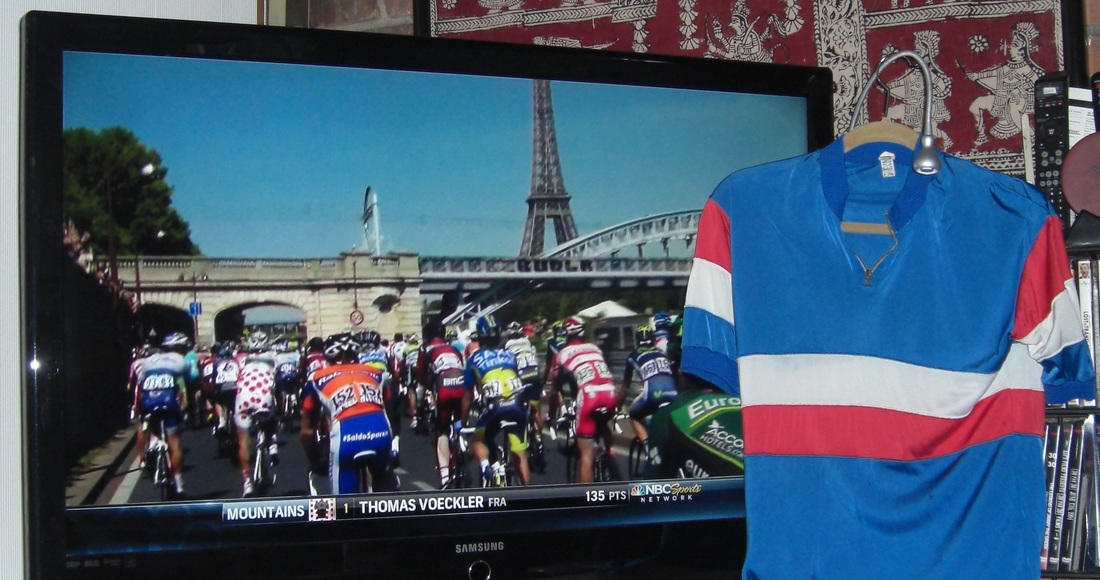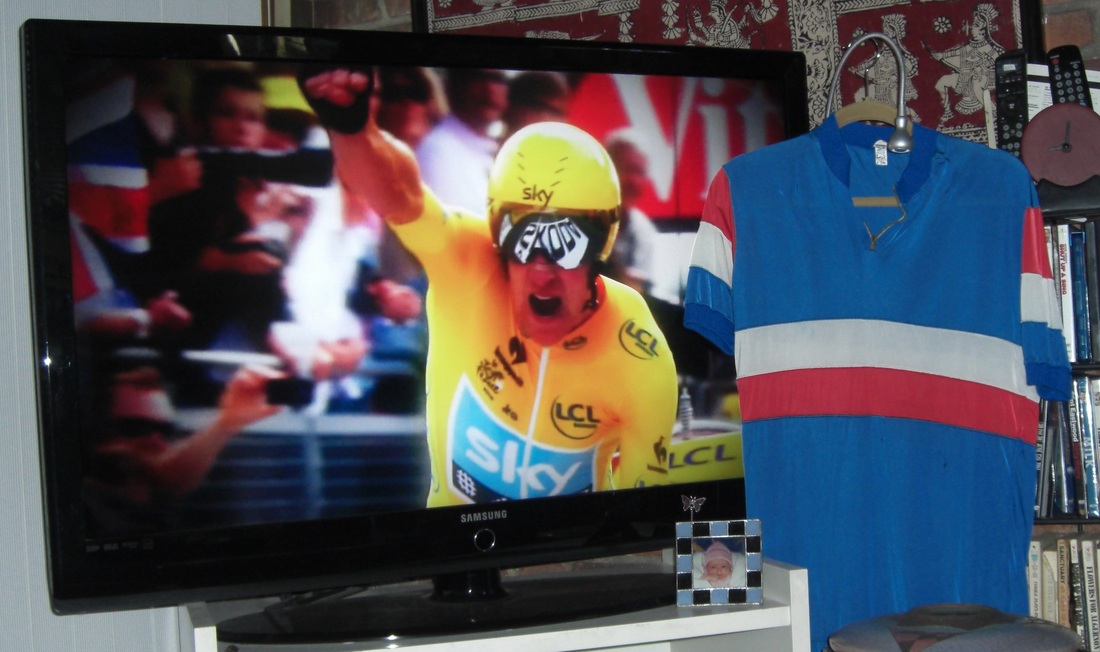|
In the last hours of the Tour on Sunday, I thought of the friend who taught me to love the sport.
So I went upstairs to get Roby’s old tricolor national-team jersey he gave to me after the Tour we shared in 1982. I hung the jersey by the television as I watched the riders make the normally ceremonial journey into Paris. I wear it only for special occasions – maybe a softball game or the five- mile Turkey Trot I used to run. I want the jersey to last. Roby Oubron was a four-time world cyclocross champion in 1937, 1938, 1941 and 1942, who was helping the Jonathan Boyer team during the 1982 Tour. Boyer had been the first American to race the Tour in 1981 – a forerunner to the Yanks who would later win the Tour. Roby was driving the car for Boyer’s manager Rob and photographer William and a Belgian camera crew (three guys known as Vandy). I was allowed to squeeze in for five days and immediately bonded with Roby who was squat and powerful and looked like Picasso. Although he had never ridden in the three-week road race that is the Tour, he had coached and mentored generations of French, Czech and blind cyclists – and was tight with Bernard Hinault, the Breton who would win the Tour that year. The car had access to the heart of the Tour. If I asked why Hinault was making a breakaway, Roby would gun the car alongside Hinault and chat with his pal, and then would report back to us in French simple enough for me to understand. Roby knew where to stop for a quick omelet during a long stage. He knew all the good bars for a quick beer in Bordeaux or the Pyrenees. He was at home with millionaire sponsors and rugged motorcycle messengers. He was one of the warmest, funniest, most communicative people I ever met. Roby had fought in World War Two, and had been injured and pulled off the battlefield by an American soldier. A few months after the 1982 Tour, Roby accompanied some Tour riders to a new race across Virginia – his first visit to the United States. I was in a car with him when we saw the Washington Monument, and I saw tears roll down his cheeks. “J’adore l’Amérique,” he said. He became my adopted uncle figure; he and his lovely wife Simone watched over our daughter when she was working in Paris; he gave me a jersey that had been worn by French cyclists; and we met every so often in New York or Paris. “Tu es un champion du monde,” I would sometimes utter in dramatic fashion, and he would chuckle. Roby passed in the late 80’s; I never got to say goodbye. But every year when the Tour comes around, I think of the old cyclocross champion who never rode the Tour, but helped me love it. * * * On Sunday Bradley Wiggins became the first British rider to win the Tour and also dug up a great finishing kick to launch his countryman Mark Cavendish to win the stage -- a gripping end to this year's Tour. I celebrated the riders, the country, and Roby by putting on his jersey and hopping on my old-guy bike, and going for a spin.
James Startt
7/22/2012 07:24:13 am
Beautiful tribute George...thanks for sharing it!
George Vecsey
7/22/2012 11:36:21 am
Jim, I hope you had a good Tour. I was telling my grand-daughter the other day about our pit stop in Belgium for some frites in a bag while you took photos before the peloton arrived. 7/22/2012 09:06:36 am
George 8/20/2012 10:40:54 pm
Beautiful tribute George...thanks for sharing it!
GOUVERNEUR-OUBRON david
9/9/2014 03:32:14 am
superbe hommage que tu lui fait,d'une amitié belle et inoubliable
obiwanagain
4/25/2017 06:14:02 am
hello Comments are closed.
|
Categories
All
|











